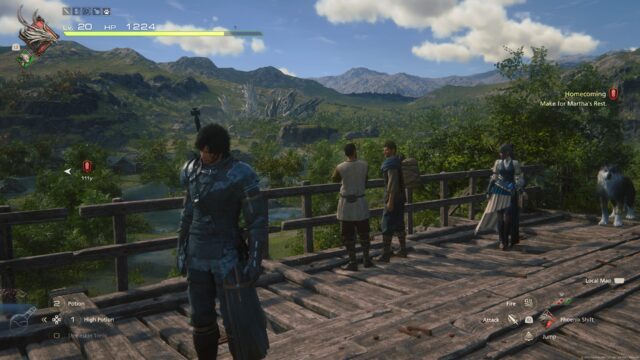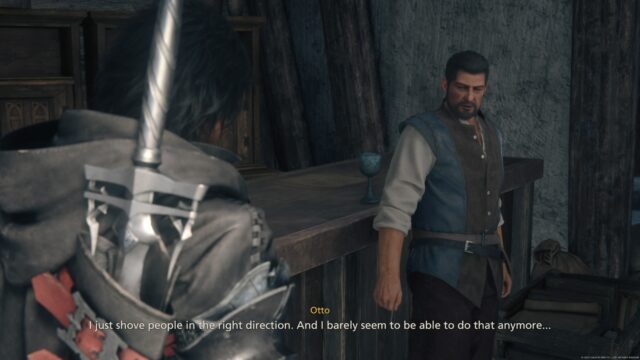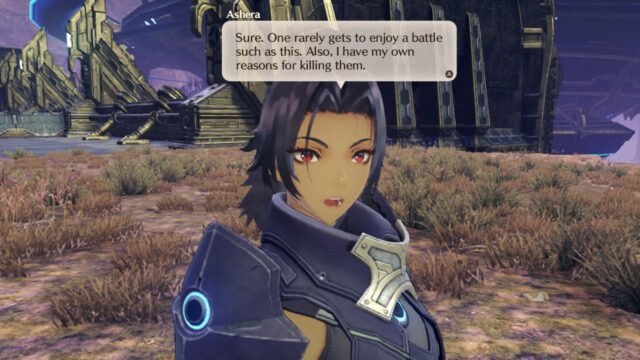Using Sidequests to Carry On Worldbuilding
There often comes a point in RPGs where the main plot moves on in such a manner that there’s really no more time or space for it to keep building upon its setting. Though there may be secrets and special locations, plus major plot points about the underlying nature of or powers behind everything, these are far flung from what the people see in their day-to-day lives and are more about resolving the narrative than getting players to care about the world. While obviously the main concern of the protagonists, it’s often hard to see how — outside of any obvious destruction — these major turns impact the game world’s general populace and can disassociate players from the setting that has been established in the search of exciting main plot turns.
However, it’s in these times that sidequests can pick up the worldbuilding slack and carry on where the main story dropped it. Admittedly, there is always a curious sense about the timing of these things, as the point when the world is in its greatest danger tends to be the prime moment to gallivant around, but very often these sidequests act as a welcome calm before the storm that comes with finales. There are particular recent high-profile examples in the past year of games that have made sure to fully utilise sidequests in order to keep players engaged in the plights of those living in their worlds, doing their utmost to add further depth while offering reminders of what and whom the protagonists are fighting for. Final Fantasy XVI and Xenoblade Chronicles 3 both do excellent jobs of ensuring that though the main plot may be moving to loftier goals, there are still many more personal stories to be told, and both manage it in different ways.

Final Fantasy XVI’s sidequests start as busywork, but they take off as world and character building tools as they game progresses.
It is worth prefacing that the sidequests in Final Fantasy XVI arguably don’t help themselves with their introduction to players. The initial offerings are light and largely amount to busywork with a tiny bit of storytelling to justify the explorative objectives players are given. However, they very much come into their own as the game moves forward. In particular, they start to draw players much more into the world and plight of Valisthea’s different people when players are on their way to Oriflamme, with two particular sidequests around the village of Moore that are very much designed to evoke a reaction out of players. It is here that it becomes evident that these sidequests are very much not simply about providing more things to do, but going forward will very much complement the story and help to build upon the world of Valisthea in conjunction with the main plotline.
However, Final Fantasy XVI’s greatest use of sidequests involves those based in or otherwise allied to the Hideaway. Many of the characters have their own personal histories and motivations that get thorough examinations primarily through these missions. With Final Fantasy XVI lacking the series’s traditional party focus, these sidequests are a crucial part of showcasing the camaraderie that builds up between those fighting for Cid and Clive’s cause, as well as offering those little stories that make the world feel as though it’s been lived in prior to the events of the game. It is usually these sidequests that also provide the most useful rewards; while most provide the usual experience, gil, and ability points, some of the Hideaway quests will unlock new equipment or the ability to store new potions.

The questlines involving the Hideaway and its allies provide plenty of depth and give players more reason to fight.
As Final Fantasy XVI progresses and its world’s threats become clearer, players get more opportunities to see how the plights of different people have been affected by both past and recent events. The game is interesting in that it avoids giving players much time within large cities, and the settlements that can be visited are primarily small outskirt towns, making the stories far more personal. Whether it’s Isabelle looking to care and keep safe the women under her charge in Sanbreque, or those trying to live out their lives honestly while helping others in need despite the oppressive change at the top in Martha’s Rest, as well as many others, there are plenty of additional stories that help showcase how the people are handling what’s going on in the world for better or worse. Final Fantasy XVI is good at showing the trials that its people face as well as how natural inclinations differ between them, and certainly many don’t come out of them particularly well. Nonetheless, the quests always provide that extra nudge that makes Clive and his allies’ struggle truly worth the fight.
Xenoblade Chronicles 3′s sidequests, meanwhile, are centered around the different colonies of Aionios that are home for its populace of soldiers stuck in an endless cycle of war. After its initial setup, the first few acts of the game give the protagonists the ability to free the colonies of Keves and Agnus from this cycle of hatred and grant them the opportunity to run their own lives. While freeing colonies forms part of the main quest as a matter of course, the story eventually moves ahead. However, players still get plenty of opportunities to visit other colonies that are out of the way and add them to the list of liberated settlements.
Xenoblade Chronicles 3 takes a different tack to its sidequests compared to Final Fantasy XVI, doing a much better job of ingraining everything within its systems early on. One of the biggest elements is the game’s Hero system, which sees the party of six joined by an optional seventh Hero, the vast majority of which hail from these liberated colonies, with recruited Heroes also granting access to their combat classes. This outright gives players a systemic reason to engage with the sidequests, but also do a great job giving individual stories to each of the colonies, expanding upon their objectives, people, and reasons for being. Freeing a colony is also not the be-all and end-all; many of the colonies’ stories only start with their freedom, and it’s finding a new purpose or how to survive after being cut away from the war effort that drives many of the tales. Even those freed during the main story offer players plenty of reasons to return.
The sidequests of Xenoblade Chronicles 3 are much more intertwined across each colony’s populace than those of Final Fantasy XVI, which are for the most part singularly character-focused. Players will need to help out a number of people before the full questline is done, and in the later parts of the game, the impact of the party on the world as a whole is made clear as the freed colonies and former enemies begin to interact and help each other out. It’s a different approach to worldbuilding than one might normally consider, but it’s highly effective; in a world whose history is simply defined by its unceasing war, players are shown how, through their actions, they are helping to build a new possible world.

Sidequests let players join forces with a wide variety of characters, some of whom even join up with the party.
There are many ways sidequests can complement the main questline; in these examples, Final Fantasy XVI looks to utilise its presentational strength in complementing its main story and combat, while Xenoblade Chronicles 3 takes the opportunity to experiment with the additional storytelling and build upon its intricately linked systems, but both use them to keep building upon and adding depth to their individual settings. Of course, worldbuilding is also just one of many different purposes sidequests can be put towards in RPGs. Some can focus on opportunities or the desire for tangible rewards such as equipment, others aim to offer something different on the gameplay side to help mix things up or to offer players tougher challenges. That’s not to say that sidequests are easy to implement effectively. Content for content’s sake can become an impediment leading to tiresome checkboxes, while some will not appreciate attempts to force them to go off the beaten path when they have only so much time available, let alone any impacts on difficulty balancing. But when sidequests are done right, they can make a world of difference.







Recent Comments